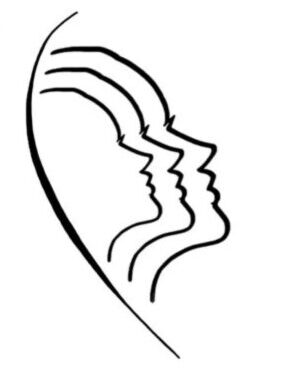What is distraction osteogenesis?
Distraction osteogenesis is a technique in orthognathic surgery that expands or stretches bone in the jaw. Simply stated, distraction osteogenesis means the slow movement apart of two bony segments which allows new bone to fill in the gap created by the bony segments.
This technique was initially used to treat defects of the oral and facial region. Over the past two decades, surgical and technological advances in the field of distraction osteogenesis have provided oral and maxillofacial surgeons with a safe and predictable method to treat select deformities of the oral and facial skeleton.
What is distraction osteogenisis in neonatal airways or piere robin syndromes?
Babies born with small jaws (micrognathia) and other congenital deformities can have airway problems at birth, sometimes so severe that they require immediate tracheostomies. Distraction devices can be place that will elongate the mandible or lower jaw so that the babies can breathe normally and have the tracheostomy removed. This procedure is done as part of the Pediatric airway team which includes the neonatalogist , pediatric ENT, and Oral & Maxillofacial Surgeon. It normally take between 2 to 3 weeks to allow sufficient growth before the tracheostomy is no longer necessary.
Distraction osteogeneisis in older patients that have skeletal facial deformities, such as cleft lip and palate patients, or severe jaw deformities can be used as well. These devices have made treating these patients significantly less complex, with a major reduction in operating time and hospitalization.
The newly formed bone can serve as an excellent foundation for dental implants.
How is distraction osteogenesis surgery performed?
During distraction osteogenesis, Dr. Frank Farbod will surgically insert the distraction device inside the mouth. The device will stretch bone in the jaw. In most cases, the entire surgery is performed within the mouth, so no facial surgical incisions are made and no unsightly facial scars will result.
Distraction osteogenesis is usually performed under general anesthesia as an outpatient procedure. Because the procedure itself is minimally invasive, there is typically less pain and swelling than traditional surgical procedures for similar conditions. Most patients return home the same day of surgery.
What can I expect after distraction osteogenesis surgery?
Postoperatively, you’ll be given appropriate pain relievers to keep you comfortable, as well as antibiotics to fight off infection. Some mild discomfort may be felt when the distraction device is activated to slowly separate the bones. This discomfort is roughly comparable to having braces tightened.
You’ll need to return to our office frequently during the initial two weeks after the surgery so that Dr. Frank Farbod can monitor you for infection and teach you how to activate the appliance. In some cases, a second minor office procedure may be necessary to remove the distraction device.
